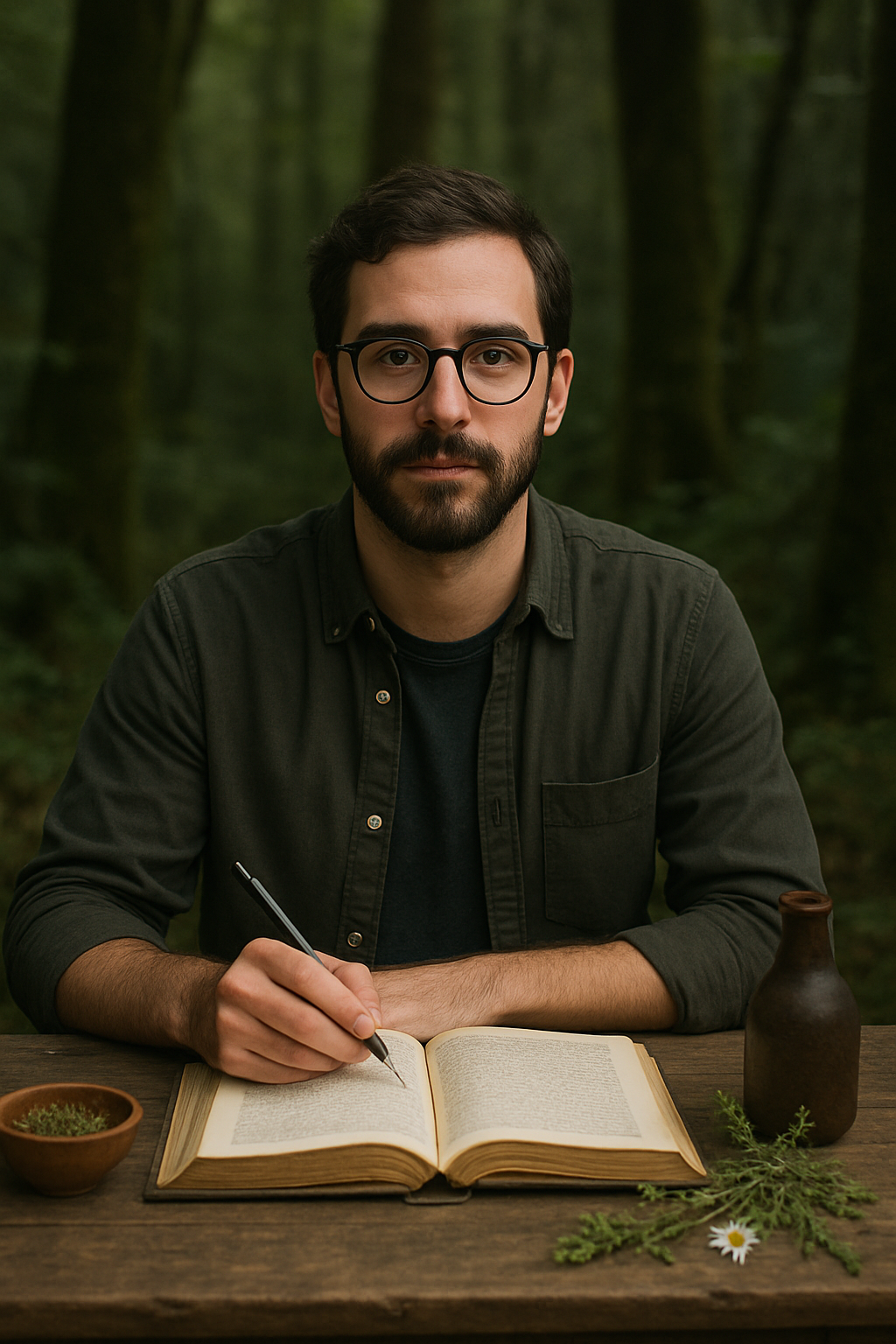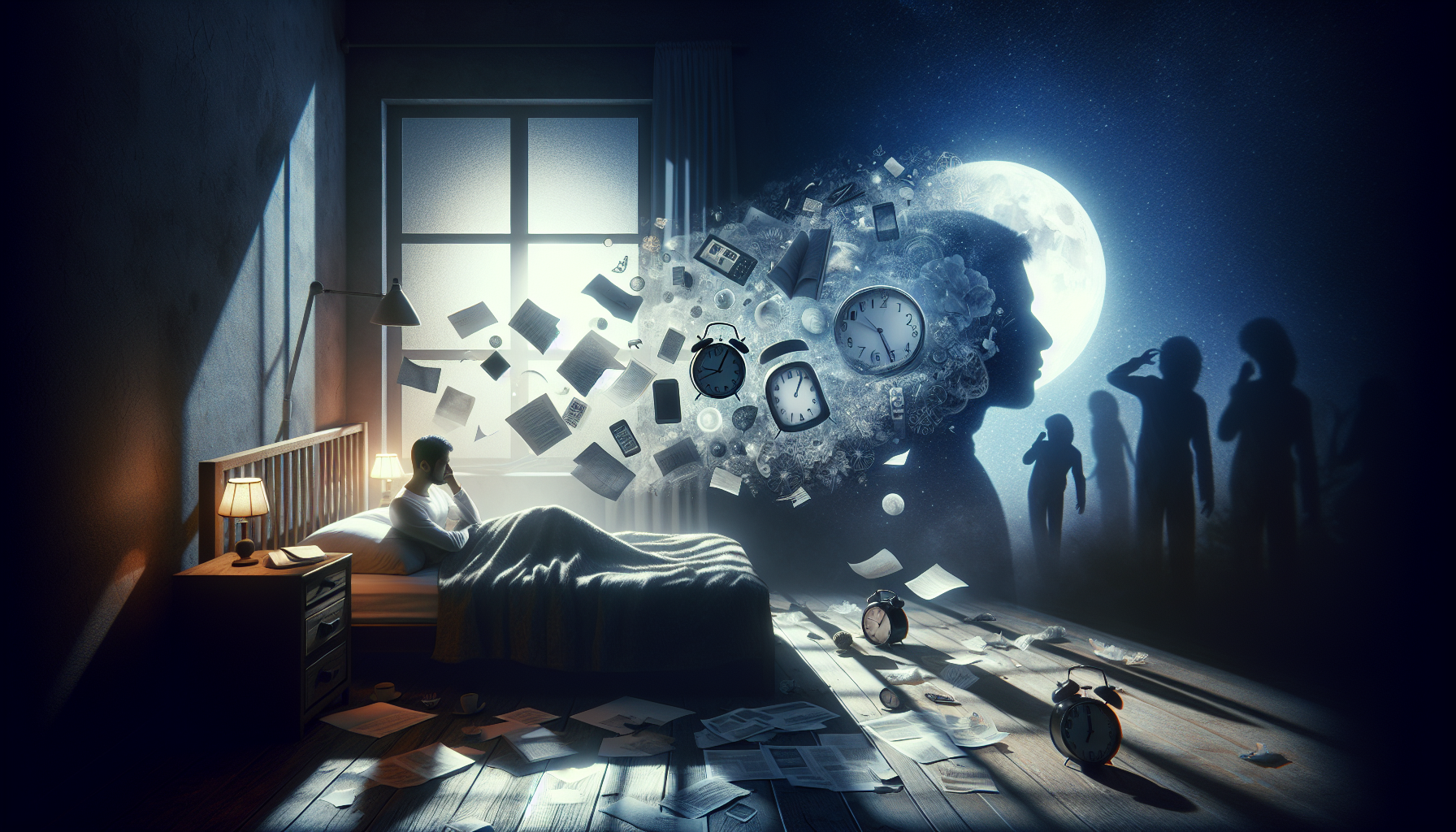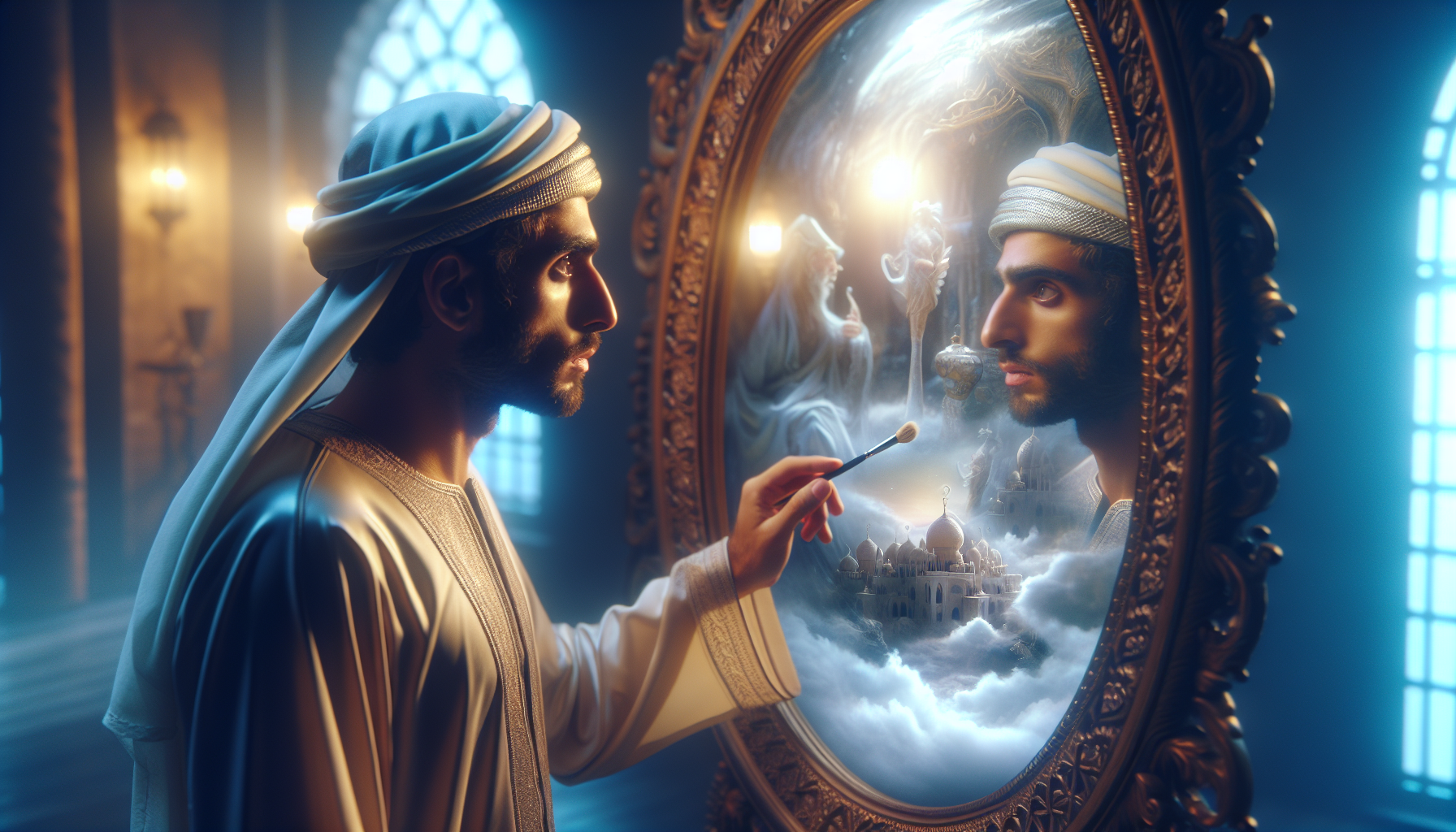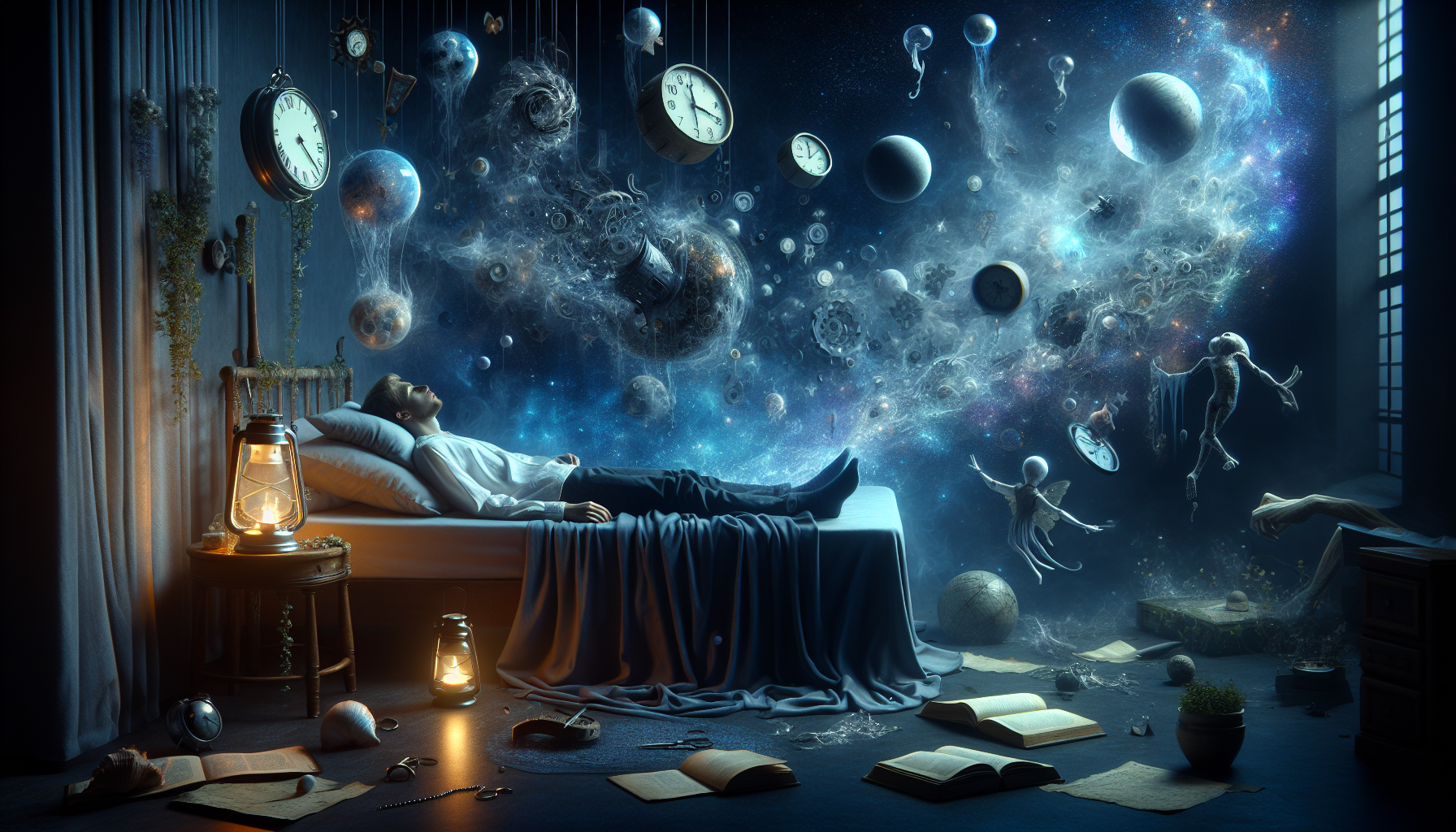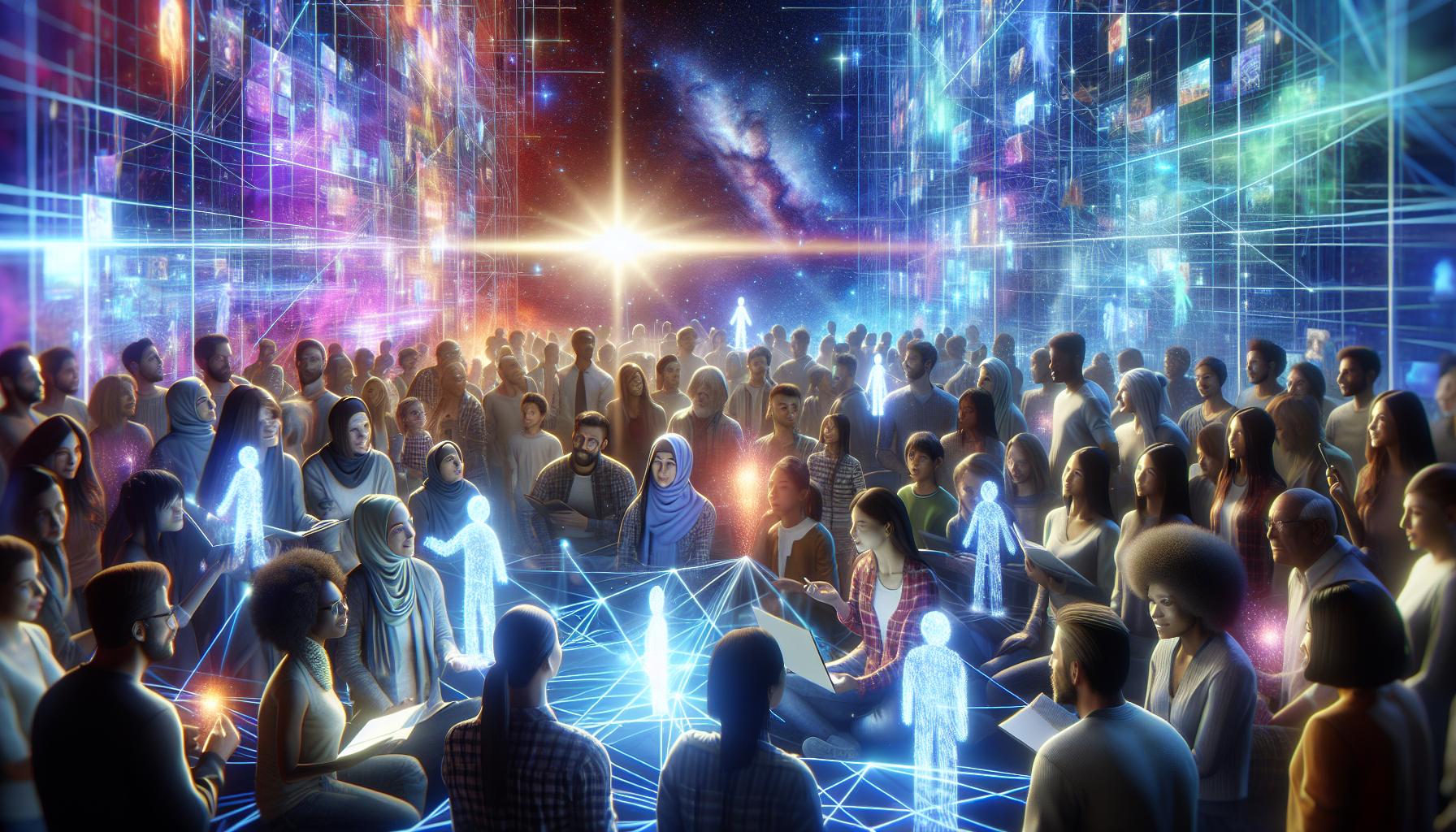In a world where logic and reason often reign supreme, there exists a mysterious and profound realm that defies the constraints of reality—the subconscious mind. This enigmatic domain, brimming with unspoken desires, dreams, and raw emotions, has long captivated the imagination of artists and thinkers alike. It serves as an untamed wilderness where the boundaries of creativity are not only pushed but obliterated. From Salvador Dalí’s melting clocks to René Magritte’s thought-provoking juxtapositions, the subconscious has been a wellspring of inspiration for some of the most iconic artworks throughout history. In this exploration of “From Dream to Canvas: Exploring Famous Artworks Inspired by the Subconscious Mind,” we delve into how artists have translated the elusive language of dreams into vivid, tangible masterpieces. 🎨
The journey begins with an understanding of the subconscious and its role in shaping human experience. This hidden layer of the mind, often described as the reservoir of feelings, thoughts, urges, and memories outside of our conscious awareness, plays a pivotal role in influencing our behavior and perceptions. Artists, with their innate ability to tap into this reservoir, offer us glimpses into the deeper aspects of the human psyche. Through their art, they invite us to question the nature of reality, confront our innermost fears, and celebrate the beauty of the unknown. In our exploration, we will uncover how these creative pioneers have harnessed the power of dreams and subconscious imagery to challenge conventional norms and ignite a revolution in the art world.
As we navigate through this artistic odyssey, we will encounter the surrealists, a group of avant-garde artists who, in the early 20th century, sought to liberate creativity from the shackles of rationalism. With a belief in the transformative power of the subconscious, artists like André Breton, Max Ernst, and Joan Miró embarked on a quest to unveil the hidden truths of the mind. Their works, characterized by bizarre and dreamlike imagery, invite us to suspend disbelief and engage with the unexpected. Through an examination of their groundbreaking pieces, we will uncover the methods they employed to access their subconscious, from automatic drawing to the meticulous crafting of dreamscapes that defy logic.
Moving forward, we will delve into the lasting impact of these visionary artists on contemporary art. The legacy of subconscious-inspired art is alive and well, permeating various mediums and influencing modern creators who continue to explore the depths of the mind. From digital artists who use technology to visualize dreams in new and exciting ways to filmmakers who weave subconscious themes into their narratives, the spirit of surrealism endures. We will explore how the principles laid down by the early pioneers continue to inspire and challenge artists today, pushing the boundaries of what art can be and how it can be experienced.
Finally, our exploration would be incomplete without a reflection on the personal and universal significance of subconscious-inspired art. These works serve as a bridge between the individual and the collective, offering a shared language through which we can all explore the complexities of the human condition. They remind us that beneath the surface of our everyday lives lies a rich tapestry of dreams and emotions waiting to be discovered. By engaging with these artworks, we are invited to embark on our own journey of self-discovery, to embrace the unknown, and to find meaning in the seemingly illogical.
Join us as we venture into the surreal, the beautiful, and at times, the unsettling world of subconscious-inspired art. Together, we will unravel the mysteries that lie within and celebrate the artists who have dared to dream beyond the confines of reality. This journey promises not only to enlighten and inspire but also to transform the way we perceive art and ourselves. Let the exploration begin! 🌌
The Influence of the Subconscious on Art
The realm of art has long been a window into the depths of human imagination, with artists drawing upon their subconscious minds to create works that transcend reality. The subconscious mind, a reservoir of thoughts, memories, and desires that lie beneath the surface of conscious awareness, plays a pivotal role in shaping creativity. Artists often tap into this wellspring of inspiration to craft pieces that reflect the complexity of human experience.
Throughout history, many renowned artists have embraced the power of the subconscious in their creative processes. The Surrealist movement, which emerged in the early 20th century, was particularly influential in exploring this concept. Surrealists believed that tapping into the subconscious could reveal hidden truths and unlock new dimensions of creativity. By delving into dreams, fantasies, and spontaneous thoughts, artists like Salvador Dalí, Max Ernst, and René Magritte created iconic works that challenged conventional perceptions of reality.
Salvador Dalí’s “The Persistence of Memory” is a quintessential example of art inspired by the subconscious mind. The melting clocks depicted in the painting evoke a dreamlike atmosphere, reflecting Dalí’s fascination with the fluidity of time and the workings of the subconscious. Similarly, René Magritte’s “The Treachery of Images” challenges viewers to question the relationship between perception and reality. By depicting a pipe with the caption “This is not a pipe,” Magritte invites us to consider the ways in which our minds interpret symbols and objects.
Surrealism and the Dream World
Surrealism, as an artistic movement, sought to bridge the gap between the conscious and unconscious mind, creating a space where dreams and reality coexist. This movement was deeply influenced by the works of Sigmund Freud, who posited that dreams are expressions of our deepest desires and fears. Surrealists aimed to channel these subconscious elements into their art, creating pieces that were both evocative and unsettling.
One of the defining characteristics of Surrealist art is its ability to evoke a sense of wonder and curiosity. By juxtaposing seemingly unrelated objects and scenes, Surrealist artists create a visual language that defies logical explanation. Max Ernst’s “The Elephant Celebes,” for instance, features a fantastical creature that combines elements of machinery and organic life, challenging viewers to interpret its meaning through their own subconscious associations.
To further understand the impact of Surrealism on art, consider the following table that highlights key differences between Surrealism and other artistic movements:
| Artistic Movement | Key Characteristics | Influences |
|---|---|---|
| Surrealism | Dreamlike, illogical scenes, unexpected juxtapositions | Sigmund Freud, subconscious exploration |
| Impressionism | Focus on light and color, loose brushwork | Natural scenery, fleeting moments |
| Cubism | Geometric shapes, fragmented objects | African art, Cezanne’s work |
As you explore the rich tapestry of Surrealism, take a moment to watch this insightful video that delves into the movement’s origins and impact: “Understanding Surrealism: Art and the Unconscious” – [Channel Name].
The Psychological Depths of Iconic Artworks
Beyond Surrealism, numerous other artists have drawn inspiration from the subconscious to create works that resonate on a psychological level. The subconscious mind, with its labyrinthine depths, offers a treasure trove of material for artists seeking to explore themes of identity, emotion, and the human condition.
Vincent van Gogh, for instance, is renowned for his emotive use of color and brushwork, which often reflect his tumultuous inner world. His masterpiece, “Starry Night,” is a vivid depiction of a dreamlike landscape, capturing the swirling energy of the night sky. The painting is a testament to van Gogh’s ability to channel his emotional turmoil into art, offering viewers a glimpse into his subconscious mind.
In contrast, the works of Edvard Munch, such as “The Scream,” delve into the darker aspects of the human psyche. Munch’s use of bold colors and distorted forms conveys a sense of existential dread and anxiety, tapping into universal fears that reside within the subconscious. These artworks serve as a powerful reminder of the capacity of art to reflect the complexities of the human experience.
Exploring the Subconscious in Modern Art
In contemporary art, the influence of the subconscious continues to be a source of inspiration for artists around the world. Many modern artists experiment with new media and techniques to explore the depths of the human mind. From abstract expressionism to digital art, the subconscious remains a fertile ground for creativity and innovation.
Abstract expressionists like Jackson Pollock and Mark Rothko sought to express their inner emotions through dynamic compositions and bold colors. Pollock’s “drip paintings,” created by spontaneously pouring and splattering paint onto canvas, are a visceral representation of the artist’s subconscious impulses. Rothko’s color field paintings, with their luminous expanses of color, invite viewers to engage in a meditative exploration of their own subconscious responses.
As you delve deeper into the world of art inspired by the subconscious, consider the profound impact these works have on our understanding of the human mind. By engaging with these artworks, we are invited to reflect on our own subconscious thoughts and emotions, forging a deeper connection with the art and ourselves.
Conclusion
**Conclusion: Unveiling the Subconscious Through Art**
As we draw to the end of this exploration, it becomes clear how deeply intertwined art and the subconscious mind are. The journey from dream to canvas is not merely a transfer of images; it is an intricate dance between the conscious and the unconscious. Artists like Salvador Dalí, with his melting clocks, or René Magritte, with his mysterious and thought-provoking imagery, have invited us into their inner worlds, allowing us to glimpse the complexities of the human psyche. These artworks serve as powerful reminders of the myriad ways the subconscious mind influences creativity and perception.
Through the vivid colors and surreal landscapes, we are reminded of the endless possibilities that exist within the human mind. These masterpieces urge us to question the boundaries of reality and dream, encouraging a deeper understanding of our own subconscious drives and desires. As we decode the symbols and motifs present in these artworks, we are prompted to reflect on our personal experiences and how they shape our perceptions of the world around us.
The importance of this theme lies not only in its artistic relevance but also in its psychological and philosophical implications. By examining how artists translate the subconscious into visual form, we gain insight into the broader human experience. Art becomes a mirror, reflecting both the individual and collective unconscious, inviting viewers to embark on their own introspective journeys.
Moreover, this exploration underscores the significance of art as a therapeutic tool. Engaging with these works can facilitate personal growth and healing, offering a safe space to confront unresolved emotions and fears. The subconscious mind, often elusive and mysterious, finds expression through art, enabling us to navigate the complexities of our inner lives.
In conclusion, the interplay between art and the subconscious mind is a rich and compelling subject, offering endless avenues for exploration and understanding. As we continue to engage with these artworks, let us celebrate the creativity and innovation they inspire, both in the artists who create them and in ourselves as viewers. Let us embrace the challenge to delve deeper into our own subconscious, using art as a guide to unravel the mysteries within.
We encourage you to share your thoughts and interpretations of these artworks. Discuss with friends, or perhaps even create your own art inspired by dreams and subconscious musings. By doing so, you contribute to an ongoing dialogue that enriches our collective understanding of the human experience.
Feel free to explore more about the fascinating relationship between art and the subconscious through these active resources:
– [Surrealism and the Unconscious Mind: A Brief Overview](https://www.theartstory.org/movement/surrealism/)
– [Salvador Dalí and the Power of Dreams](https://www.salvador-dali.org/en/)
– [Exploring René Magritte’s Surreal World](https://www.moma.org/artists/3692)
Thank you for joining us on this journey from dream to canvas. Let these masterpieces continue to inspire and challenge us, opening our minds to new dimensions of thought and creativity. 🌟
João is a visual storyteller and dream archivist whose work explores the delicate threshold between memory and imagination. Through layered visuals and symbolic design, he captures the fleeting essence of dreams — those strange, luminous, and sometimes haunting fragments that slip through sleep and echo into waking life.
His creative journey is fueled by a deep fascination with the subconscious and its boundless imagery. From half-remembered landscapes to recurring archetypes and surreal encounters, each piece João creates becomes a portal into an inner archive — where time bends, meanings shift, and personal mythologies emerge.
With a background in handcrafted artistry and visual composition, João weaves intuition and precision together. His work doesn’t just depict dreams; it preserves them, translating ephemeral visions into tangible forms that stir emotion, spark curiosity, and invite reflection. Each creation is both a record and a doorway into the uncharted terrain of the psyche.
Through illustrated dream journals, symbolic explorations, and visual essays, João invites others to engage with the poetic architecture of their own subconscious landscapes. His art acts as a mirror — not only of what we glimpse in sleep, but of what lies quietly within us all.
His work is a tribute to:
-
The fragile beauty of dreams that fade with dawn
-
The symbolic language of the inner mind
-
The unseen worlds we inhabit but seldom name
Whether you are a lucid dreamer, a seeker of hidden meaning, or simply captivated by the mystery of the night’s visions, João welcomes you to step into a space where dreams are not lost — they are kept, one image, one symbol, one story at a time.

